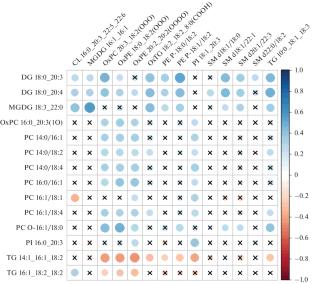Lipidomic Markers of Tumor Progress in Breast Cancer Patients
Abstract—
Research of cancer progression mechanisms and their impact on metabolism of tumor cells and tumor microenvironment cells is an important element in drug development for cancer target therapy. In this study, changes in tumor tissue and margin tissue lipid profiles were investigated for their association with the following clinical and morphological characteristics: tumor size, cancer stage, multifocality, tumor grade, number of lymph node metastases, Nottingham prognostic index, total malignancy score, and the level of Ki67 protein. Lipid profiling was performed by reverse-phase chromato-mass spectrometry analysis of the lipid tissue extract with lipid identification by characteristic fragments. In the lipid profile of tumor tissue 13 characteristic lipids were selected. Their levels significantly correlated with at least 5 clinical and morphological features. Eight of 13 lipid features belonged to phosphatidylcholines. In the lipid profile of tumor microenvironment tissue, 13 lipid features were selected. Their levels significantly correlated with at least 5 clinical and morphological features. Four of 13 lipid features belonged to oxidized lipids, 4 lipid features belonged to sphingomyelins, 4 lipid features belonged to phosphatidylethanolamines. The tumor microenvironment tissue lipid profile correlated with the tumor size, the cancer stage, the tumor grade, the number of axillary metastases, and the Nottingham prognostic index. The tumor tissue lipid profile correlated with tumor size, tumor grade, total malignant score, and number of axillary metastases.


 求助内容:
求助内容: 应助结果提醒方式:
应助结果提醒方式:


